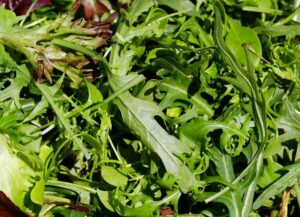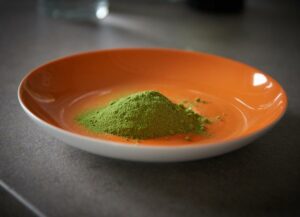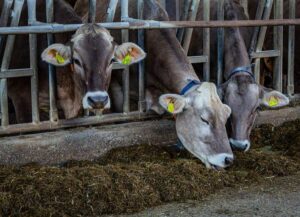Maria Villagrasa & Fernando Diaz
Hemp (Cannabis sativa) has been cultivated for hundreds of years around the world. Industrial hemp is grown in Europe on a limited basis to produce fiber, but also seeds and oil. Hemp varieties that can be grown for these purposes should be included in the common catalogue of varieties of agricultural plant species in the European Union (EU).
The maximum tetrahydrocannabinol (THC) content, which is the main psychoactive substance, is limited to 0.2% in the EU, while in the US it must be less than 0.3%.
Hemp processing co-products, like other plants could be used as feed for livestock. Hemp seed is rich in fatty acids such as omega 3, omega 6 and omega 9. It is also rich in protein and fiber and is also a good source of trace minerals such as copper, iron, boron, manganese and zinc.
In order to provide more data on this product, a study (Kleinhenz et al., 2020) aimed to characterize the concentration of nutrients, digestibility and concentration of cannabinoids of industrial hemp and its different parts when used as livestock feed.
The samples obtained were 1. whole industrial hemp plants (without roots), 2. stems obtained after seed harvesting, 3. raw female flowers intended for extraction of cannabinoids, 4. whole seeds for seed production, 5. leaves obtained from the drying process, 6. straw obtained after harvesting and cleaning of the seeds, and 7. female flowers processed after cannabinoid extraction.
Nutrient concentration and fiber digestibility
The nutrient concentration and digestibility of the fiber varied depending on the part of the plant analyzed (table1). The whole plant and stem had less protein, minerals and energy compared to flowers, leaves and seeds. They also had a high concentration of fiber with low digestibility, something expected since the stem fiber is used in the production of rope, paper and fabrics.
| Nutrients % (DM basis) | Whole plant | Leaves | Stem | Unprocessed flowers | Seeds | Processed flowers |
|---|---|---|---|---|---|---|
| Dry matter (DM) | 70.3 | 88.9 | 64.8 | 90.9 | 89.8 | 96.6 |
| Crude protein (CP) | 6.9 | 13.0 | 5.3 | 21.2 | 23.0 | 24.5 |
| Fat, % DM | 2.7 | 8.9 | 1.2 | 12.5 | 13.2 | 3.2 |
| Ash, % DM | 8.8 | 21.2 | 6.3 | 14.1 | 16.6 | 25.7 |
| Sugars, % DM | 2.7 | 5.9 | 2.0 | 5.0 | 2.8 | 4.7 |
| Starch, % DM | 0.2 | 0.9 | 0.1 | 0.7 | 0.7 | 0.6 |
| Acid detergent fiber (ADF) | 60.8 | 20.8 | 64.6 | 26.1 | 29.6 | 18.1 |
| Neutral detergent fiber (NDF) | 81.6 | 44.7 | 84.4 | 52.5 | 53.2 | 30.9 |
| Digestible NDF30 h (% NDF) | 28.8 | 9.3 | 12.7 | 19.3 | 43.1 | 19.7 |
| Digestible NDF 240 h (% NDF) | 32.0 | 12.4 | 28.1 | 30.4 | 58.9 | 39.6 |
| Non-fibrous carbohydrates (NFC) | 2.5 | 15.3 | 5.3 | 6.3 | – | 20.2 |
| Total digestible nutrients (TDN) | 24.0 | 41.0 | 19.8 | 53.6 | 61.5 | 46.0 |
| Calcium, % DM | 1.4 | 4.3 | 1.0 | 2.3 | 2.6 | 3.6 |
| Phosphorus, % DM | 0.3 | 0.4 | 0.3 | 1.1 | 0.7 | 0.4 |
Table 1. Results of nutrient analysis and fiber digestibility of hemp portions.
The highest CP concentration was obtained in processed flowers (24.5%) and the lowest in the stems (5.3%). Unsurprisingly, the stems and whole plant contained the highest fiber concentrations. The low digestibility of the NDF indicated that both industrial hemp and its co-products are overall relatively undigestible.
In general, the low digestibility values observed had a negative effect on TDN concentrations. Both energy and TDN were found to be relatively low compared to other roughages.
The highest TDN concentrations on a dry basis were found in the seeds (61.5%), and raw (53.6%) and processed flowers (54.3%). These values are comparable to the TDN of the plant residues of corn, oat straw and barley. Therefore, hemp plants, even those with the highest concentration of fat, are poor sources of energy; they can be used however in heifer diets or dry cows as a source of fiber. The stems (19.8%) and the entire plant (24.0%) had the lowest TDN values.
Calcium concentration was relatively high compared to other fodders commonly used as livestock feed.
Cannabinoid concentration
Cannabinoids were detected in all samples of the plant, but their concentrations were different (table 2). The only cannabinoid that was not detected in any sample was the tetrahydrocannabinol (THC). The psychoactive cannabinoid ‘9-THC’ and its precursor ‘9’tetrahydrocannabinolic acid A’ were found in all plant samples, with leaves and flowers having the highest concentrations.
These concentrations, however, were less than 0.3%, which is the legal threshold for plant materials to be considered industrial hemp and not marihuana in the U.S. Flowers and leaves had also the highest concentrations of cannabidiol and its precursor, whereas the stems contained the lowest concentrations.
| Cannabinoid | LOQ | Whole plant | Leaves | Stems | Unprocessed flowers | Seeds | Processed flowers |
|---|---|---|---|---|---|---|---|
| Cannabinol, μg/g | 0.1 | 9 | 31 | 4 | 27 | 11 | 21 |
| Δ9-Tetrahydrocannabinol, μg/g | 0.1 | 186 | 573 | 31 | 664 | 275 | 301 |
| Cannabidiol, μg/g | 0.25 | 721 | 3,347 | 132 | 3,509 | 262 | 8,062 |
Table 2. Quantification limit (LOQ) and cannabinoid concentration.
At the present time there are no data on the effects of feeding cannabinoids or hemp plants to cattle. The transmission of cannabinoids to meat and milk may be possible, if the animals are exposed to the hemp plant, but there is no published literature on the oral absorption of cannabinoids in ruminants.
The maturity of the plant at harvest time, soil fertility and season, can influence the nutritional and cannabinoid concentration of plants and specific parts thereof. Therefore, it would be important to know the variety and end-use of industrial hemp or through which process the co-product was obtained.
The results of this study can help dairy farmers and the scientific community research the potential use of hemp as livestock feed.
Reference
Michael D. Kleinhenz, Geraldine Magnin, Steve M. Ensley, Jason J. Griffin, John Goeser, Eva Lynch and Johann F. Coetzee. Nutrient concentrations, digestibility, and cannabinoid concentrations of industrial hemp plant components. 2020. Applied Animal Science 36:489–494.
© 2020 Dairy Knowledge Center. All Rights Reserved.











